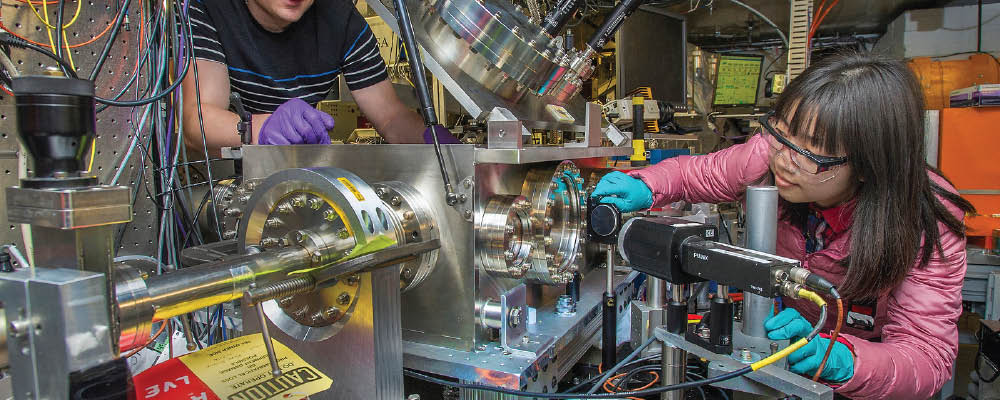Accelerator Test Facility (ATF)

Description
The Accelerator Test Facility (ATF) at Brookhaven National Laboratory provides high brightness low-energy electron beams (to 80 MeV) and precisely timed high power laser beams (to 2 TW at CO2 wavelengths) to users. Serving users for more than 20 years, the ATF has hosted experiments that have demonstrated new particle generation and acceleration techniques, novel radiation production methods, and a range of accelerator technologies that support many applications in discovery science, industry, and medicine.
The ATF’s high-power CO2 laser provides users access to the yet-unexplored mid-IR spectral domain for strong-field physics research. Together with precisely synchronized electron beams and a suite of diagnostic instruments, the ATF offers exceptional facilities for strong field and laser-matter interaction experiments.
Science
The ATF hosts users from universities, labs and industry from across the world. Researchers use the unique facilities that the ATF offers to perform a wide range of experiments to validate scientific theory and test new accelerator technologies. As a dedicated DOE Office of Science Accelerator Stewardship facility, the ATF welcomes both high impact scientific research and accelerator technology development. The ATF has specialized capabilities in the following areas:
- Novel particle acceleration techniques: R&D on novel techniques to make smaller, more cost effective accelerators is a major focus of ATF activity, which includes plasma and dielectric wakefield acceleration, direct laser acceleration, inverse free-electron lasers and more.
- High-brightness radiation sources: New techniques to produce electromagnetic radiation from THz to X-rays includes R&D on FELs, Inverse Compton scattering, THz radiation from dielectric structures, and more.
- Beam manipulation and beam instrumentation: The ATF accelerator has sophisticated longitudinal and transverse beam manipulation capabilities, allowing the production of a wide range of beam parameters (including shaped and multiple bunches) and advanced techniques such as shot-noise suppression and energy chirp compensation. These broad capabilities support a wide range of users who come to test accelerator hardware, diagnostics, and detectors.
- Ion generation and acceleration: Experimental hardware for producing supersonic hydrogen gas jets provides capabilities for generating monoenergetic multi-MeV proton beams.

